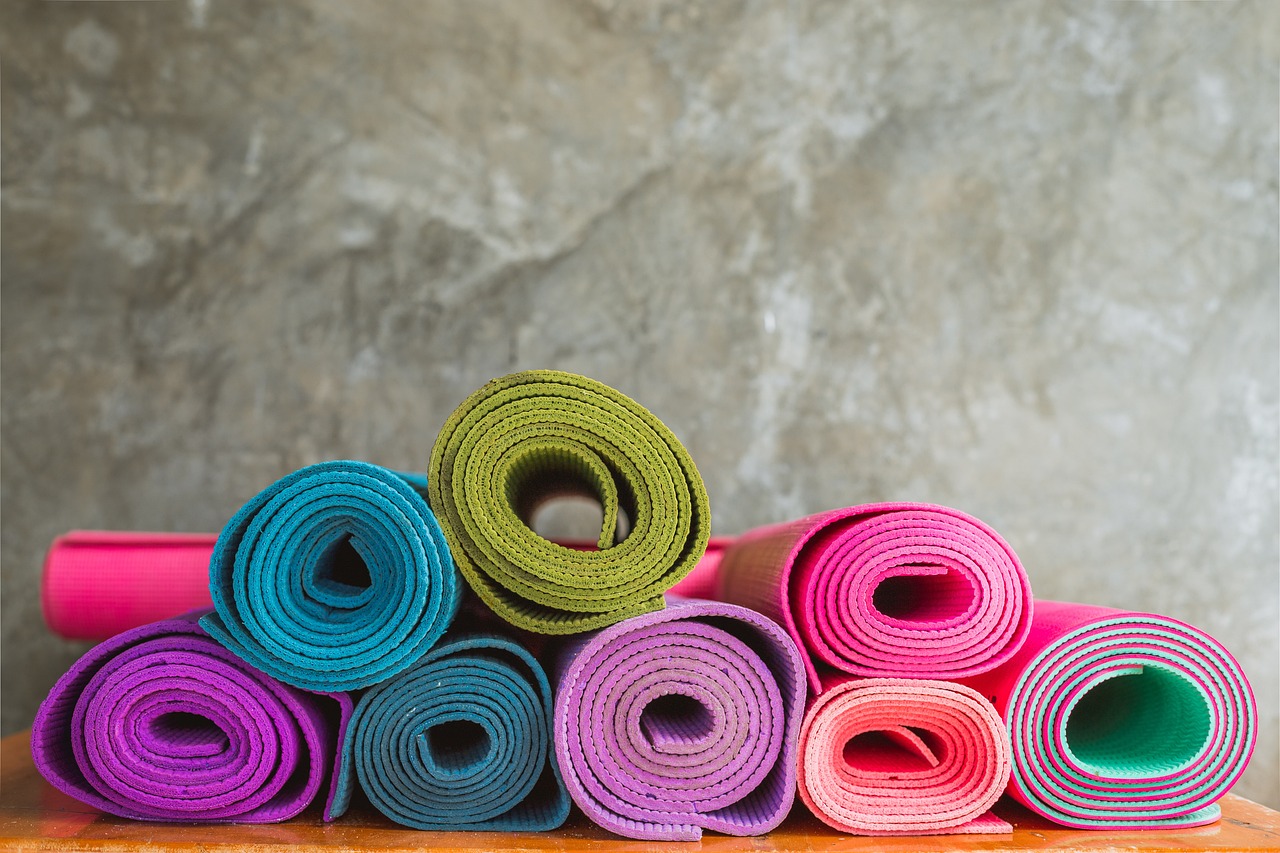Having the right yoga mat is an important part of setting yourself up for success in your practice. With so many sizes, materials, and features to consider, choosing a mat that suits your needs and style takes some research. Follow this comprehensive guide to identify the performance, quality, and design factors that matter most for your personal yoga journey. Discover your perfect mat match!
Table of Contents
You may also want to know: How to Start a Yoga Practice
Factors to Consider in a Yoga Mat
Assess these key factors when evaluating yoga mat options:
- Materials – Natural rubber, PVC, or more eco-friendly materials like cotton, jute, or cork. Affects grip, cushioning, and sustainability.
- Thickness – Standard is 4-5mm for yoga. Thinner mats fold easier but sacrifice padding. The average is 1/4 inch thick.
- Texture – Stickier “gripper” textures provide traction. Smoother surfaces can be slippery. Look for etched textures.
- Size – Standard is 24”x68” but 25”-28” width is nicer for standing postures. Extra long 7’+ lengths suit taller yogis.
- Weight – Light 1-5 lb mats for portability. Heavier rubber mats stay put better.
- Durability – Quality mats last years with frequent use. Check density and resilience.
- Odor – Some PVC and rubber mats have strong smells initially. Natural materials like jute and cork are odor-free.
- Style – Solid colors or dynamic prints and patterns. Reflects personal flair.
- Cost – Budget basic mats are $10-30. Performance mats run $50-100+ based on materials.
Consider your frequency of practice, use locations, and eco-friendliness when deciding on features.
Types of Yoga Mats
With so many options, compare the main yoga mat types:
- PVC mats – Most common and affordable yoga mats. Good grip but may contain phthalates.
- Natural rubber mats – Offer excellent traction and cushioning. Eco-friendly non-Amazon harvested rubber available.
- Jute fiber – Made of natural jute plant fibers. Biodegradable and grippy when wet. The softer feel needs rug underlay.
- Cotton mats – Absorbent, breathable and eco-friendly. Provide less grip without treatment. Machine washable.
- Cork mats – Sustainably harvested from tree bark. Natural antimicrobial properties. Grip improves with use.
- PER mats – Polymer Environmental Resin mats are non-toxic, sustainably made, and biodegradable. Excellent traction.
Test mats in person if possible to evaluate comfort and stickiness when flowing through poses.
Key Yoga Mat Features
Beyond materials, useful features include:
- Textured surface for optimal grip, especially when sweaty. Important for safety.
- Alignment lines that cue proper hand and feet placement. Helpful visual aid.
- Thickness to provide sufficient cushioning of joints without feeling unstable.
- Lightweight for easy transport to classes yet weighted enough to stay put.
- Antimicrobial materials that won’t harbor odors or bacteria over time.
- Closed-cell construction that prevents absorption of sweat and oils.
- Dense, high-quality materials for durability and resilience over years of use.
- Non-toxic, earth-friendly materials aligned with yogi principles.
The right combination of features boosts your practice. Avoid flimsy mats that stretch out.
Yoga Mat Texture Types
Mats use different surface textures for optimal grip:
- Raised ridges or nubs texture provides tactile grip and traction. Most durable textures.
- Etched, waffled or bumpy surfaces grip skin well when flat on the mat. Varied grip patterns.
- Cotton, jute, or microfiber offer a reliable grip. Natural fibers grip better than smooth PVC.
- Mat sprays add adhesive texture. Reapply often as effects fade. Wet cloth reactivates grip.
- Suede-like microfiber texture on some mats provides excellent traction without needing spraying.
The more textured the surface, the better mat stays put during practice. This enhances safety.
Caring for Your Yoga Mat
Keep your mat in top shape by:
- Always cleaning your mat after use with gentle, mat-safe cleaners. Removes sweat, oils, and dirt.
- Allowing time to completely air dry mats before rolling them up to prevent mildew.
- Storing horizontally to avoid curling edges or use a mat sling case.
- Spot cleaning with mild soap and warm water. Avoid harsh chemicals.
- Checking for signs of wear like thinning, tearing, or stretched-out areas. Replace the mat if overly worn.
- Removing dirty footwear before stepping on the mat. Bare feet only maximize grip and longevity.
- Carrying rolled up in a strap or bag to prevent damage.
- Avoiding sun exposure which can degrade materials over time.
Treat your mat well for long-lasting stickiness and support through years of daily yoga sessions!
Choosing the Best Yoga Mat Bag
Carry and protect your yoga mat in style with a purpose-designed mat bag:
- Messenger-style yoga mat bags with a long strap suit carrying mats to the studio or work. Hands-free convenience.
- Backpack yoga mat bags allow the distribution of weight evenly. Great for walking or biking to class.
- Sling-style yoga mat bags that lightly strap over the shoulder are low-profile options.
- Look for padding in the flap area to minimize edge curling and support strap for easy carrying.
- Yoga mat bags should be water-resistant to shelter your mat.
- Size the bag to fit your mat size – standard width is 6” but wider mats need more room.
- Side pockets come in handy for storing personal items and keys too.
- Matching bags and mats (sold separately or as bundles) provide a coordinated look.
Now that you know what to look for in your perfect yoga mat, you can match your priorities to the many options available. Seek a quality mat that supports your practice goals while reflecting your personal style. Take time to find that exceptional mat to become your trusty companion on your wellness journey. Then you’re equipped to reach new heights in yoga and life!
Related Links:
https://en.wikipedia.org/wiki/Yoga
